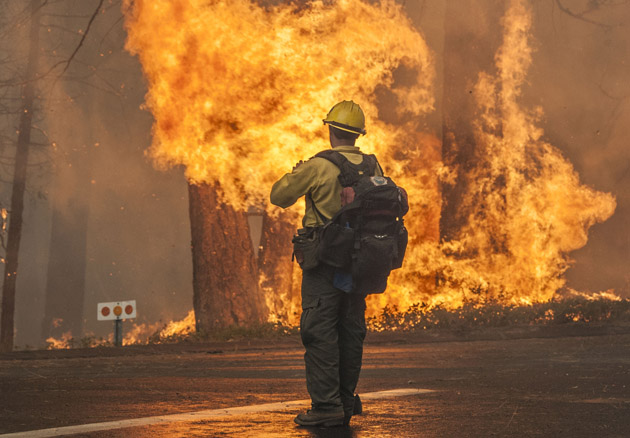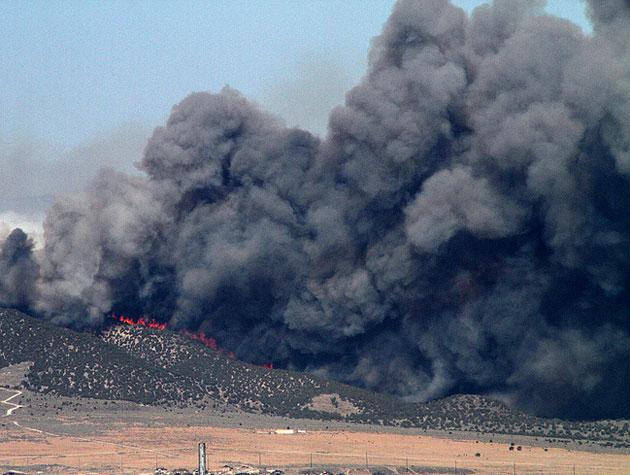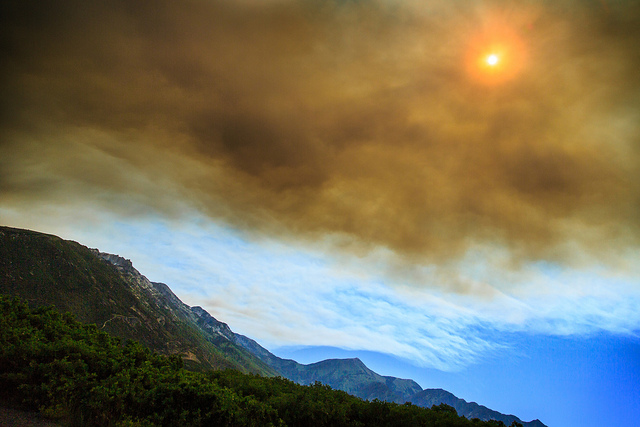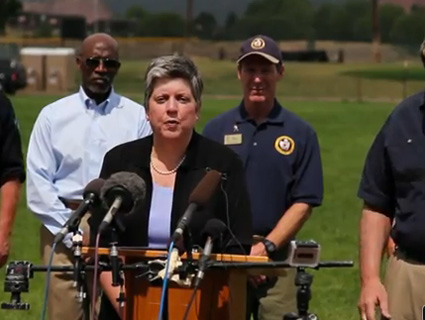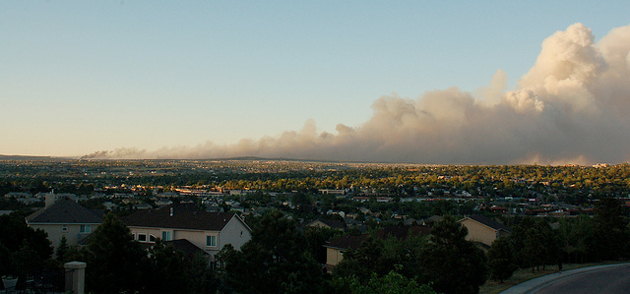
<a href="http://www.flickr.com/photos/96671942@N00/9020204491/in/photolist-eK5Ux6-eK3QTz-eK3Qf6-eK4GH5-eLjPFS-eL8ph6-eLjqKY-eLjrgy-eL81CV-9yZNNV-9yZP3F-eL7NiR-eLRzHR-ePgxKC-8p9Nks-8p9NcL-vY2WQ-eK3T4F-eKwsj4-8dXTHe-e2iCXd-3ezD1j-cK6Jcs-cK6QBL-cK6MVQ-eL7thV-ePgCaN-6TvaYo-77d7Bd-kbrpM-dFASoH-cX9seo-87ovsg-7d4eYo-8pDktW-9GiktK-543YeU-8JD5Bh-7NVxYv-4mMoja-eKTany-2PHUqe-eKUL8m-cUhcLJ-2V8s-bUJJ92-2PNkSo-79xNQ4-aLErBe-8BDhFd-abuogF">Phillip Stewart</a>/Flickr
Authorities are still investigating what started Colorado’s record-breaking Black Forest fire. But Rachel Ehrenfeld, the director of the neoconservative think tank American Center for Democracy, unveiled a potential suspect in a blog post on Sunday: Al Qaeda. Or drug cartels. Or maybe illegal immigrants.
While many of the fires that have scorched millions of acres and destroyed thousands of homes in Arizona, California, Colorado, New Mexico, Utah and other states have been identified as arson, none have been publicly attributed to criminal or terrorist groups, despite the presence of Mexican gangs and large number of other illegals in our Western states … How many Tzarnaevs are hiding in Colorado’s woods?
Ehrenfeld, whose group includes Iraq War advocate Richard Perle and former CIA director R. James Woolsey, notes that Al Qaeda’s English-language magazine Inspire published a how-to guide for starting forest fires last year. The article singled out Montana as America’s most fire-attack-worthy state due its large number of citizens living near forests. A decade ago, an Al Qaeda detainee told the FBI about a potential plot to ignite several wildfires at once across the country, though the National Interagency Fire Center officials said at the time that they didn’t see it as a particularly credible threat.
Don Smurthwaite, a spokesman for the Bureau of Land Management, downplayed Ehhrenfeld’s worries, but he didn’t dismiss the notion outright. “We don’t have any hard evidence that any wildfires in the US were started by terrorists in recent years,” he said. “But is it a possibility? Certainly.” He added that wildfires were last weaponized in World War II, when Japanese forces sent incendiary balloons across the Pacific in hopes of starting damaging blazes in Western forests.
Last year, humans started 58,331 wildfires in the US, compared to fewer than 10,000 caused by lightning, according to the National Interagency Fire Center. But lightning fires burned 6.8 million acres, more than twice the amount consumed by human-caused flames. That’s because the latter tend to occur in much smaller areas, Smurthwaite said. Campfires, fireworks, and vehicle fires are to blame for most wildfires.
What ACD’s Ehrenfeld and other wildfire terrorism hand-wringers don’t seem interested in exploring is how much more devastating an attack could be if climate change continues unabated, with dry air, high winds, and low humidity making fires more frequent and ferocious. Even Inspire highlights the effects dry conditions and strong winds can have on blazes. The magazine’s first issue also featured a column on the need to address climate change that Osama bin Laden supposedly penned. (Bin Laden’s proposed solutions to climate change—boycotting US goods and killing American troops in the Middle East—are slightly outside the scientific mainstream, however.)
If the government does deem the threat of a terrorist wildfire to be credible, forest flammability could become yet another opportunity to reframe climate change as a matter of national security, along with issues like water shortages, energy security, and overseas disaster response. Until then, perhaps it’s time to get Smokey Bear’s drone fleet up and running.
